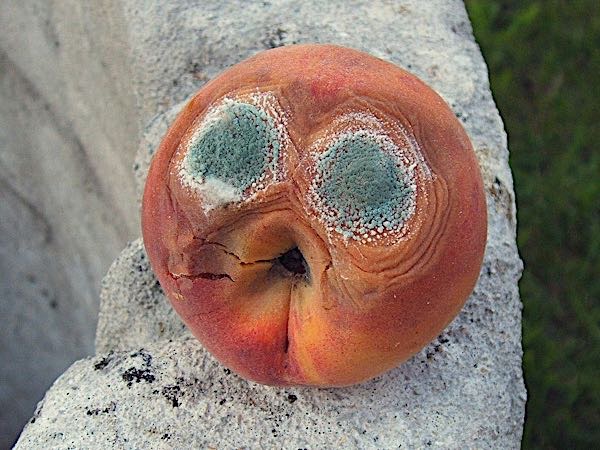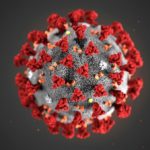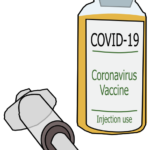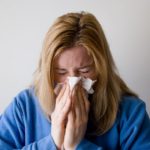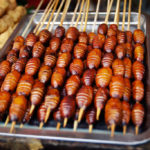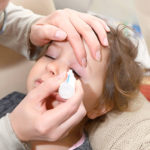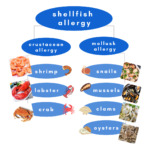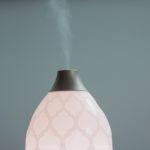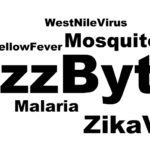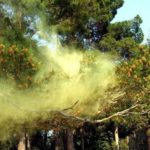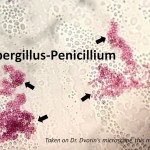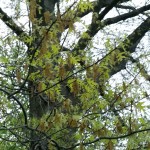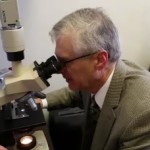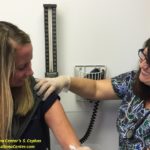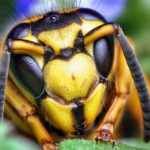Mold Spores Galore: Extreme Mold Allergies in Delaware Valley
Mold Spores Galore: Extreme Mold Allergies in Delaware Valley
Mold allergy, allergic reactions to mold spores, are on the rise in the United States causing misery for perhaps one in three individuals with allergies and/or allergic asthma. Last week in the Delaware Valley alone, Dr. Dvorin reported extreme outdoor mold counts for several consecutive days, with nearly 9000 mold spores per cubic meters of air / 24 hours. The reported high mold counts may provoke severe allergic and asthma symptoms for people in Philadelphia and South Jersey.
Drawing on decades of expertise in identifying, evaluating and treating the common and uncommon manifestations of mold allergy, The Asthma Center’s board-certified allergists present Mold Spores Galore: Extreme Mold Allergies in Delaware Valley.
Mold Allergy Symptoms
Virtually no environment is without molds which release mold spores. Too small to be seen by the naked eye, mold spores are found in every breath we inhale, and may also enter the body through the eyes, ears, mouth, and skin.
Adults and children with mold allergies may experience the typical symptoms of allergy such as sneezing, nasal congestion, and/or itching of the nose, itchy and watery eyes, itchy ears and/or hives (skin rash.) Exposure to mold spores can also provoke flares of asthma, chronic sinusitis, and headaches, including migraines. Less common, severe allergies to mold spores include allergic bronchopulmonary aspergillosis (ABPA) and allergic fungal sinusitis (AFS.)
Mold Allergy and Outdoor Mold Counts
Molds, also known as fungi, produce spores and other fungal particles. Outdoor mold spores play a major role in causing most mold allergy symptoms. Like pollen, mold spores are airborne and become abundant in the warmer weather months. Unlike pollen, which typically is released in the greatest numbers early in the day, mold spore release depends three factors: 1) type of mold present, 2) heat and 3) humidity. “Dry air” spores (xenophilic) such as Cladosporium or Alternaria release the most spores during the afternoon hours when the weather conditions are hot and dry. “Wet air” spores (hydrophilic), such as Ascospores and Basidiospores release the largest numbers of spores during pre-dawn hours when there is high humidity.
Delaware Valley’s Outdoor Mold Spore Counts

Pollen and mold spore particles have distinct shapes and are easy to distinguish from each other under the microscope. However, mold spores and other fungal particles are very small and can be challenging to differentiate between the species. The Asthma Center’s Dr. Donald Dvorin’s training, experience and certification by the National Allergy Bureau (NAB) combine to bring the Delaware Valley the only official mold spore count for metropolitan Philadelphia and Southern New Jersey.
For those with mold allergies, knowing the daily mold count is essential in order to reduce the impact of exposure to outdoor mold spores, for planning daily activities and following Allergy & Asthma Action Plans (increasing or decreasing medications.) In the Delaware Valley, The Asthma Center’s official pollen, ragweed, and mold spore counts are available via email, on our website, and social media.
In metropolitan Philadelphia and Southern New Jersey, molds appear in the early spring and persist throughout the summer and fall seasons. There is no “peak season” for mold spores. Dr. Dvorin has observed that the highest levels of mold spores, which may provoke extreme symptoms, occur from midsummer through the late fall. During winter months, outdoor mold spores reduce significantly – especially if snow covers the ground.
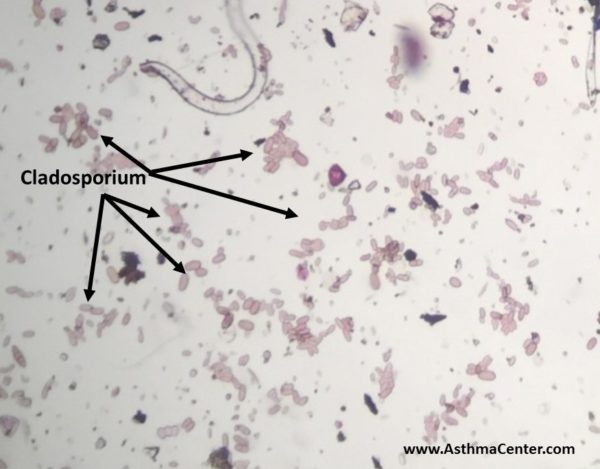
Dr. Dvorin’s historical mold data reveals that Cladosporium is the predominant mold spore in our region’s air. Other common molds for our region include Ascospores, Alternaria, Basidiospores, and Epicoccum.
Dr. Dvorin also notes that the unusual mold spores of Aspergillus and Penicillium are frequently present in the air of the Delaware Valley. These mold spores can cause severe allergic reactions in the lungs (allergic bronchopulmonary aspergillosis [ABPA] ) and sinuses (allergic fungal sinusitis [AFS.] ). When Aspergillus and Penicillium mold spores are elevated, The Asthma Center issues an Unusual Mold Alert for metropolitan Philadelphia and South Jersey. Subscribe to receive these alerts with daily mold spore counts direct to your inbox!
Other molds species observed in our region by Dr. Dvorin include Botrytis, Cercospora, Curvularia, Drechslera, Fusarium, Nigrospora, Oidium, Periconia, Pithomyces, Polythrincium, Rusts, Smuts, Stemphylium, and Torula.
Top 5 Ways to Reduce Mold Spore Exposure & Mold Allergies
- Avoid uncut fields and piles of damp leaves if possible.
- Make sure water drains away from your home (not toward the basement or foundation). Vent dryers to the outside-not indoors!
- Monitor indoor humidity levels and make your home less mold-friendly by using dehumidifiers and air conditioners. Keep indoor humidity between 35% and 50%. (Inexpensive meters for measuring humidity in a home can be purchased at a hardware store.)
- Identify the source of mold and remove it before it spreads. If you spot mold in your home on a hard surface –such as glass, plastic or tile—clean it with a bleach solution, soap and water, or a commercial product. For mold on drywall, seek professional advice.
- Do not procrastinate! Acting promptly is a critical component of mold prevention. If a spill or leak leaves a rug wet, dry it within 48 hours to keep mold from growing. Be sure to not delay from cleaning gutters, because the damp leaves serve as a breeding ground for mold.
Lawn Allergy: Mold & Cut Grass
Mowing your lawn to reduce grass pollination and limiting your exposure to grass pollen are both important steps in avoiding the misery of allergies. In addition to grass pollen triggering allergy symptoms, many individuals experience typical allergy symptoms such as sneezing, itchy watery eyes, nasal congestion, and even wheezing when exposed to the smell of freshly cut grass. Allergic reactions triggered by the smell of freshly cut grass are likely from the non-pollen parts of the grass, which also contain allergenic proteins or outdoor molds, which have been stirred up by the mowing process. Concentrations of these allergy triggers dramatically escalate for a short period of time during and immediately after mowing. For more tips on reducing exposure to outdoor molds when mowing the lawn, read The Asthma Center’s Allergy-Friendly Lawn & Grass Guide.
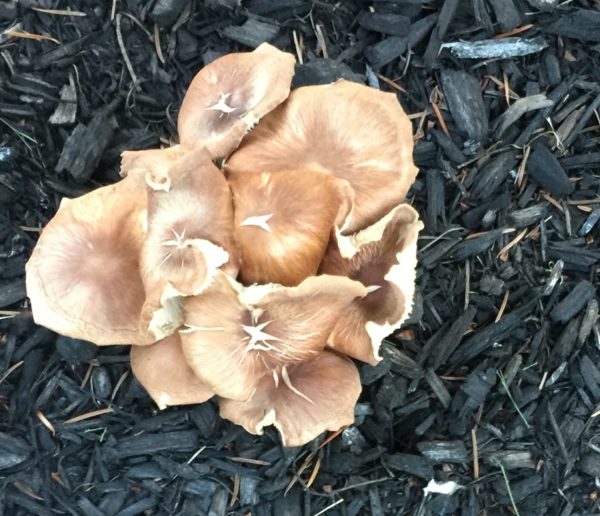
Outdoor Mold Prevention Tip: If you are seeing mold growing on your mulch, be sure to check the thickness of the layer of mulch. Mulch layered thicker than 3 cm allows for molds to grow, repelling water from reaching the roots under the mulch.
Storms Kick Up Mold Allergies
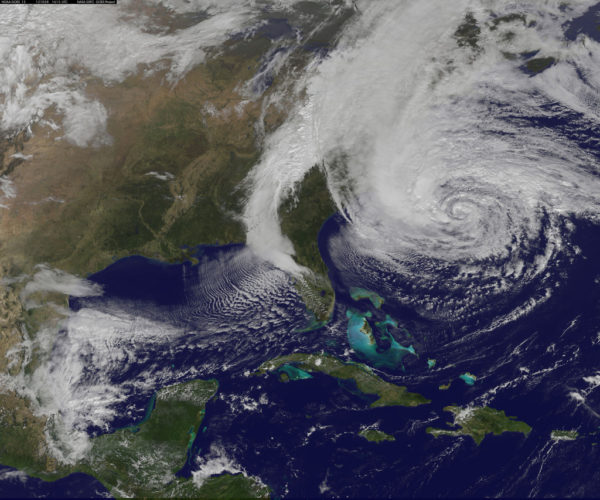
Molds thrive with increased moisture. It is no surprise, then, that there is a connection between increased mold allergy symptoms and storms, which include thunderstorms, rain, tropical storms, and hurricanes.
In fact, in April, 2017, a study in the Journal of Environmental and Public Health reported findings from two researchers on the connections between Hurricane Irene in 2011 and Hurricane Sandy in 2012 and positive reactions to allergy skin testing to molds. The researchers reviewed the medical records of several hundred individuals living in New Jersey, and found that post-hurricane allergy skin tests revealed an increased allergic reaction to molds.
Mold Triggers Allergic Asthma
Mold allergy is recognized as an important trigger for Allergic Asthma. A board-certified Allergist plays a crucial role in identifying which molds provoke asthma symptoms in order to develop a personalized Asthma Action Plan. A comprehensive evaluation for mold allergy and allergic asthma includes, but is not limited to, allergy skin testing, review of environmental exposures, specialized pulmonary function testing, and a physical examination.
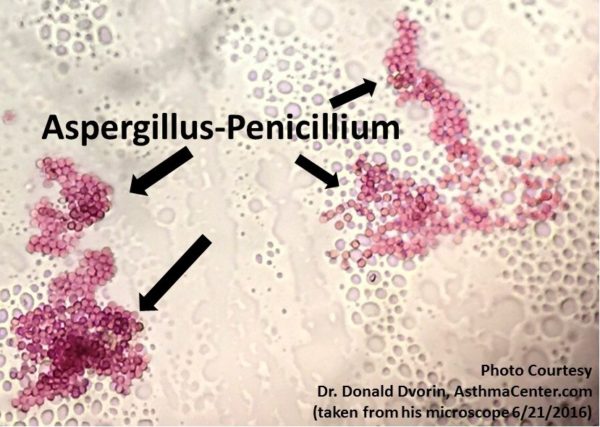
What is ABPA (Allergic bronchopulmonary aspergillosis)?
Allergic bronchopulmonary aspergillosis (ABPA) is an allergic reaction in the lung to Aspergillus fumigatus. Reactions to this fungus are rare in individuals with normal immune systems. Individuals with asthma or cystic fibrosis are among those commonly affected by ABPA. If you have asthma, one of the first noticeable symptoms may be a progressive worsening of your asthma symptoms including coughing, wheezing, and shortness of breath. Other allergic conditions which may be present include nasal allergies (allergic rhinitis), sinusitis, and skin allergies (atopic dermatitis/eczema and urticaria/hives). Treatment usually includes oral corticosteroids and sometimes oral anti-fungal treatments. Individuals with ABPA are usually followed closely by their physician.
What is AFS (Allergic fungal sinusitis)?
Allergic fungal sinusitis (AFS) is the most common fungal infection associated with chronic sinusitis. This condition often occurs in people with nasal polyps and sinus disease. It is usually resistant to conventional medical and surgical treatments. Tissue within the sinuses is often covered with characteristic thick gel-like discolored mucus filled with allergy cells (eosinophils). This gel is often described as “allergic mucin” and often contains fungal elements when properly stained and examined microscopically. Treatment of allergic fungal sinusitis includes surgery, oral and nasal corticosteroids, allergy injection therapy, leukotriene modifiers, antihistamines and oral decongestants. Unfortunately, oral antifungal treatment is usually not effective.
Indoor Mold Allergens
Mold allergens associated with mold spores and other fungal elements can be a major source of indoor allergens, particularly in home where damp or wet areas exist. Areas of mold growth are often difficult to detect, hiding under floors or behind walls.
The mixture of mold spores seen indoors includes Penicillium, Aspergillus, and Cladosporium. Unique molds like Stachybotrys may be found in some indoor settings where extensive water damage has occurred. If molds are suspected, special culture techniques and air sampling specimens may be done. A thorough inspection may be required by experts in environmental contamination and mold remediation.
There have been many claims made regarding connections between damp environments and health effects. Possible reasons for these connections include: allergic reactions, direct irritation by fungal mold elements, toxins released from molds (Aspergillus, Fusarium, Penicillium, Stachybotrys): volatile organic compounds (VOCs), or other immune responses stimulated by mold. Individuals with exposure to damp environments often present with symptoms of congestion, coughing, mucous discharge, headache, shortness of breath, eye itching, dizziness, restless legs, fatigue and abdominal pain. Most individuals with exposure to mold contaminates do not have typical allergic symptoms. Whether all indoor molds produce health problems beyond allergic reactions is still widely debated. Therefore, the presence of mold or mold derived toxins in an indoor environment does not necessarily mean there are associated effects on health.
A Board-Certified Allergist Can Help with Mold Allergy & Allergic Asthma
At The Asthma Center, our allergists and pediatric allergists help our patients manage their mold allergies and allergic asthma by determining what molds cause symptoms. For example, we identify which local molds (including Cladosporium, Ascosopres, Alternaria, Basidiospores, and Epicoccum) trigger allergy and asthma symptoms by using minimally invasive in-house diagnostics, like allergy skin testing and breathing tests. Pairing these results with local knowledge of allergy triggers like pollen, ragweed and mold, our allergists develop personalized plans that treat not only the symptoms but also the cause of allergies. And because allergy and asthma symptoms often spike with mold spore counts, we know exactly when to adjust medications – providing more relief when conditions are bad and less medication every time else.
The allergists, pediatric allergists, and asthma specialists at The Asthma Center treat patients in 9 convenient locations throughout the Delaware Valley including Philadelphia (Center City Philadelphia, Society Hill Philadelphia, Northeast Philadelphia), The Main Line – Montgomery County (Bala Cynwyd – Lower Merion PA), Bucks County (Langhorne PA), and South Jersey (Mt. Laurel NJ, Woodbury NJ, Hamilton NJ, Forked River NJ).
The health information contained in this article is meant for basic informational purposes only. It is not intended to serve as medical advice, substitute for a doctor’s appointment or to be used for diagnosing or treating a disease.
For interviews and tours of the Delaware Valley’s only National Allergy Bureau (NAB) certified pollen, ragweed, and mold spore counting stations in Philadelphia, PA and Mt. Laurel, NJ, please email gwoodlyn@asthmacenter.com
Recent
Popular

